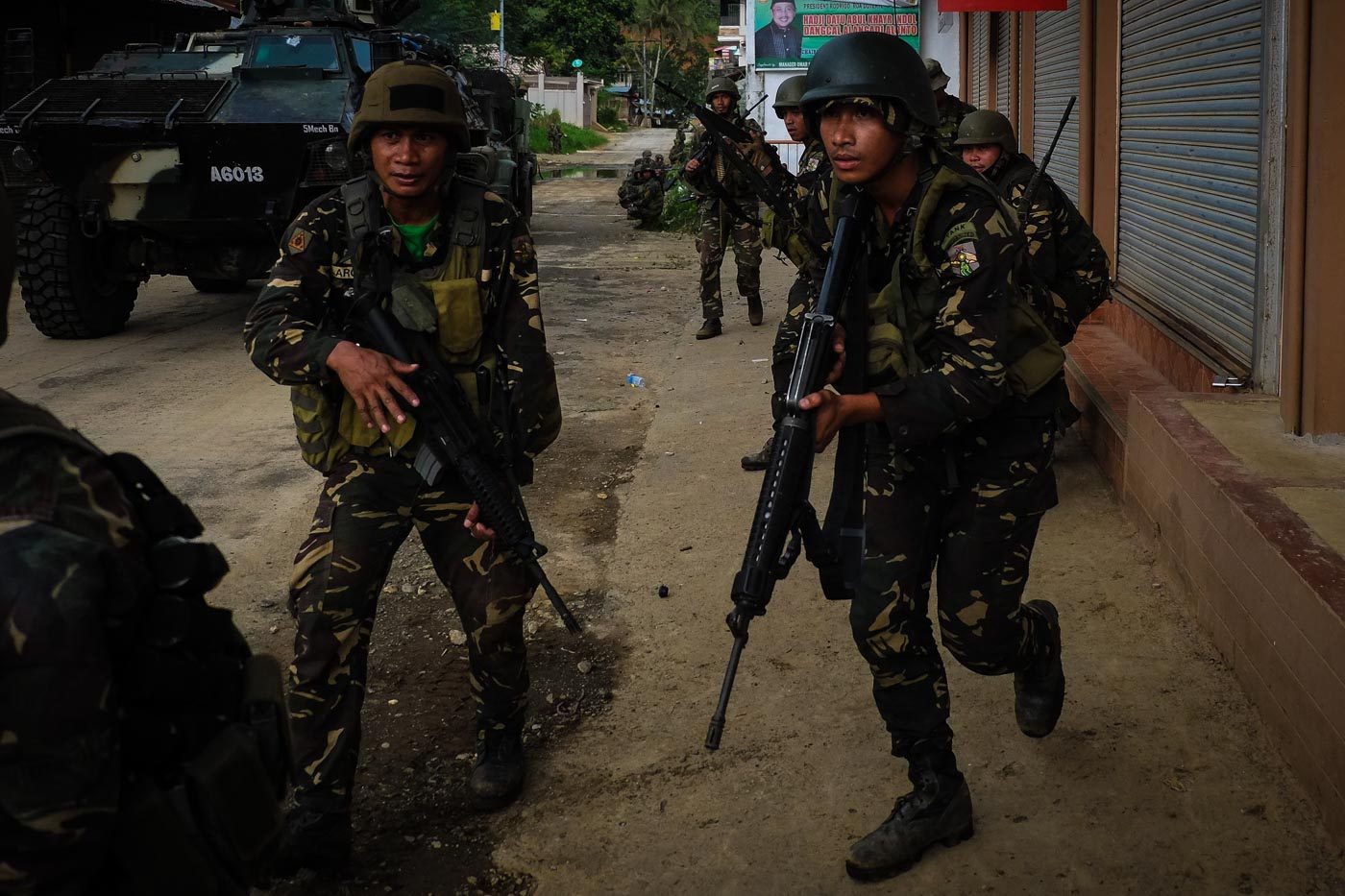SUMMARY
This is AI generated summarization, which may have errors. For context, always refer to the full article.

MANILA, Philippines – The Islamic State (ISIS) was so preoccupied with what was happening in Marawi City, that it neglected terror attacks in Indonesia.
A report by the Terrorism Research and Analysis Consortium (TRAC) on the “Islamic State’s Hidden Narrative” found that in terrorists’ circles, all eyes were on the Philippines, which affected terrorist activity in neighboring Indonesia.
“The [ISIS] narrative for Indonesians was to do hijrah in the Philippines, not commit attacks at home,” stated the report released on Tuesday, October 24.
“Dozens of Indonesians found their way to Marawi as part of a longtime jihadi pipeline that includes Malaysia.”
The events in Marawi City significantly overshadowed activity in the rest of the region, so much so that even the terror attacks that were carried out in Indonesia were belatedly claimed by ISIS. (WATCH: Marawi in 360: Inside the war zone)
While there were 3 attacks claimed by ISIS in Indonesia in the summer of 2017, two of those attacks in late June 2017 “were not claimed on Telegram (as usual) on the day of or the day after the attack but more than a week later in Al Hayat Media’s Rumiyah 10 magazine, and only in the Indonesian-language version.”
“It is likely that for Amaq and [ISIS] central, neglect of Indonesian claims was due to a preoccupation with the Philippines’ Marawi siege as the monumental Islamic State East Asia event,” the report reads.
Even the most successful ISIS-claimed attack over the summer, where 3 police officers were killed by two suicide bombers on May 24, was not widely covered by international media.
“This was largely buried in terms of international-regional media attention by the siege of Marawi, which started the day before.”
On May 23, the military entered Marawi City and raided a safe house where Isnilon Hapilon, the so-called emir of ISIS in Southeast Asia, was reportedly spotted. He escaped, but his supporters went out into the streets, waving black ISIS flags.
The terrorists were led by the homegrown Maute Group, but also included foreign fighters mainly from Indonesia and Malaysia.
The siege turned into a full-fledged war between the military and the terrorists.
On October 16, a military assault finally killed top terrorist leaders Hapilon and Omar Maute. Exactly 5 months since the war started on October 23, the government announced the official end of fighting in Marawi City.
More success in Marawi
The report also cited other reasons why Indonesia’s terror attacks have been less successful.
Jemaah Ansharut Daulah (JAD), a loose-knit jihadi cell network aligned with ISIS, has failed to stage significant attacks, “not for lack of trying,” according to the report, “but they represent amateurs against a seasoned security sector and crack counter-terror police unit Densus 88.”
Indonesia’s counterterrorism units have been successful in foiling terror plots and wiping out one group of jihadis who held territory in the remote areas of Poso.
This is another reason why terror attacks in Indonesia have been largely targeted towards government forces than civilians.
“All three 2017 claimed attacks can be seen in the context of a late spring-early summer JAD campaign against Indonesian police,” the report reads.
“The motivation for this conflict was local grievances: less jihad than vengeance against the aggression and abuse of Densus 88, who has been called out internationally for its brutal tactics.”
It also emphasized that “the Islamic State has failed to shed blood in Indonesia because jihadis there do not want to kill their fellow Muslim civilians, many of whom are conservative.”
“They therefore choose hard targets such as government buildings and police posts.”
But while Indonesian cyber-jihadis did use Telegram channels to promote the war on the Indonesian police, their main promotion was still focused on the Marawi siege and disseminating bomb-making instructions.
This information matches the testimony of Lordvin Acopio, who was taken hostage in Marawi City. Acopio said the Indonesians were mostly bombers while the Malaysians and the Arabs were fighters in the frontline.
Acopio said he met 7 Indonesian foreign fighters while he was held hostage, but Indonesian intelligence has pegged the number of Indonesians who fought in Marawi to be as high as 40.
Huge risk in PH
Overall, the report was somewhat optimistic. It said that while ISIS media claimed 21 attacks in 7 countries in summer 2015, 80 attacks in 21 countries in summer 2016, and 222 attacks in 21 countries in summer 2017 – nearly triple the previous year – this projection of increasing global reach is immediately undercut by a second finding.
“16 of those 21 countries had 3 attack claims or less and only 5 of 21 countries had 6 or more attack claims,” it said.
But it did warn that the Philippines could be at risk for more attacks.
“Just 3 countries accounted for 175 of 222 attacks in summer 2017 (nearly 80%): Philippines (99 claims), Afghanistan (43 claims), and Egypt (33 claims). TRAC contends that these places, which receive scant Western attention, represent the narrative of [ISIS] future territory.” – Rappler.com
Add a comment
How does this make you feel?
There are no comments yet. Add your comment to start the conversation.